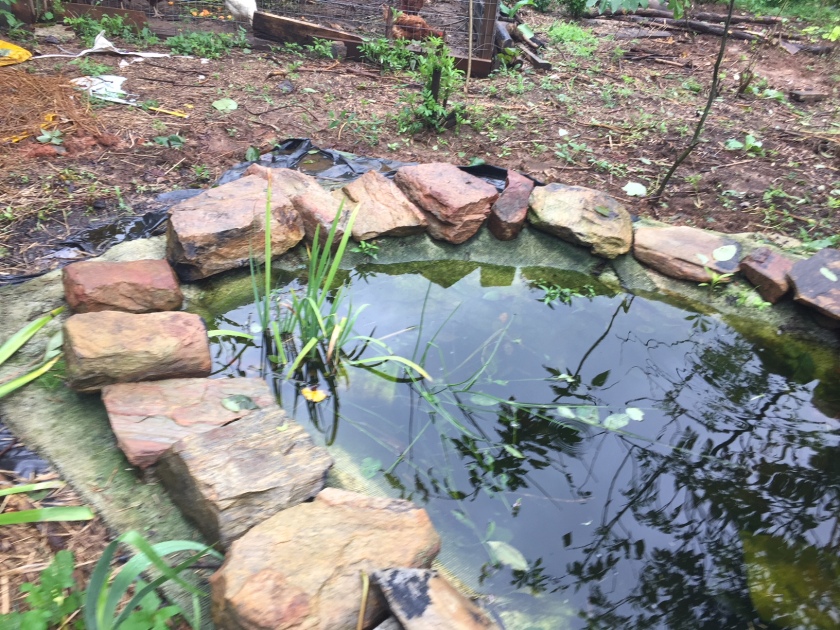



…and one in October. Note all butterflies were spotted alighting on anise hyssop (Agastache foeniculum), which I shall hereafter refer to as the super-nectary.
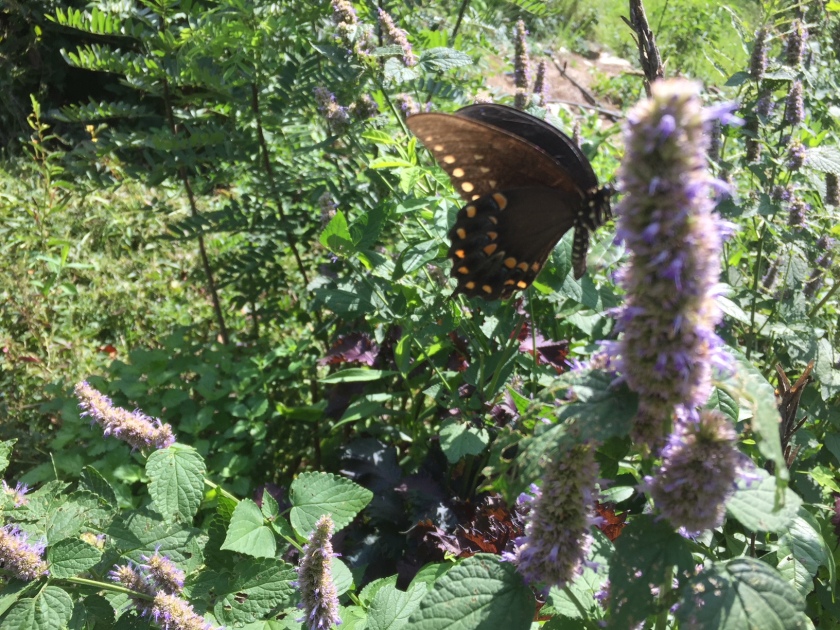
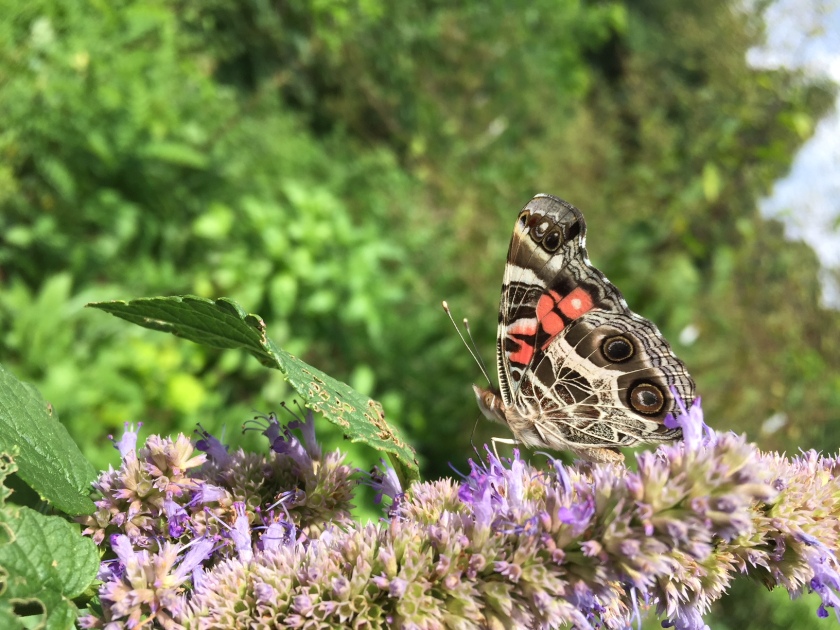
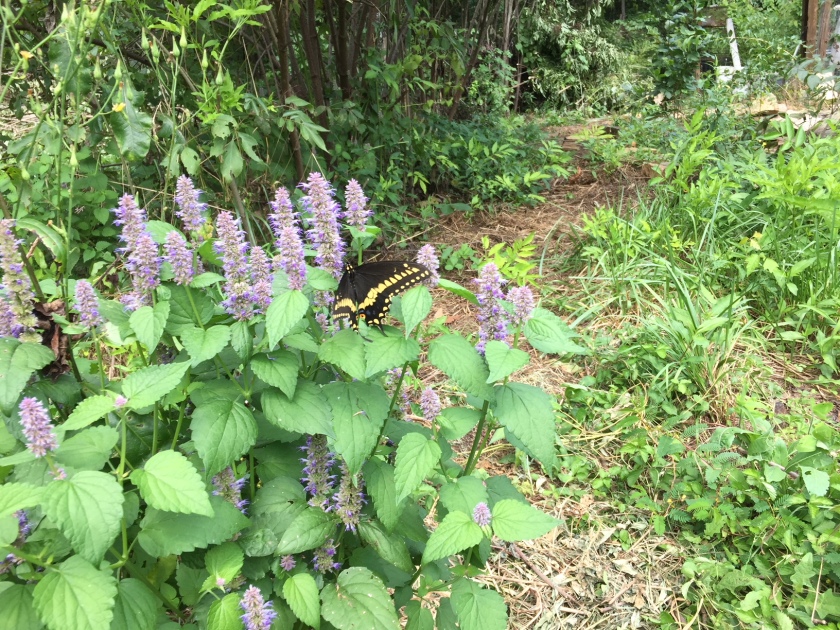

The nine plants of Sambucus canadensis exceeded my wildest expectations. After two years, they outgrew their space in the garden this summer. My sense is that they can be as vigorous and prolific as bamboo, but more gentle and forgiving. They, along with the passion vine, turned the garden into a jungle.
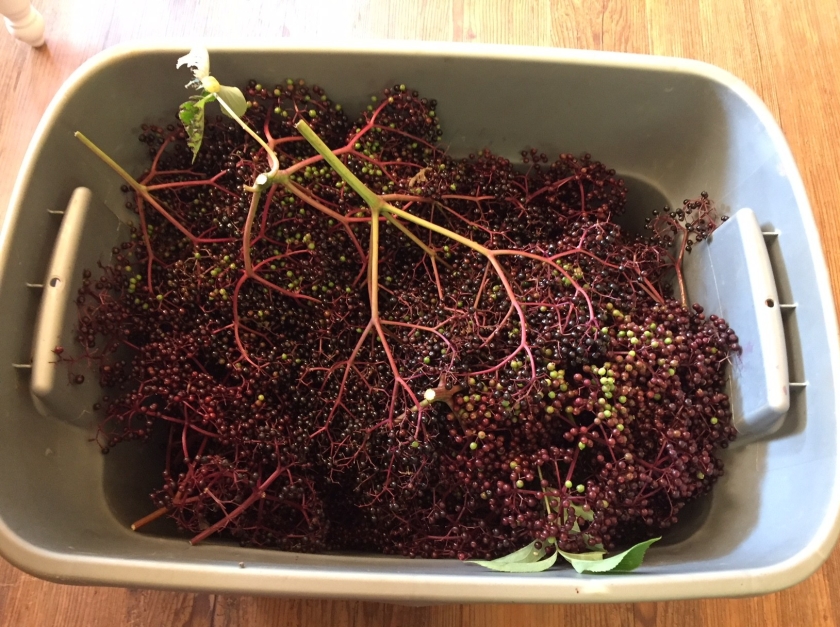
The jungle, before culling begins.

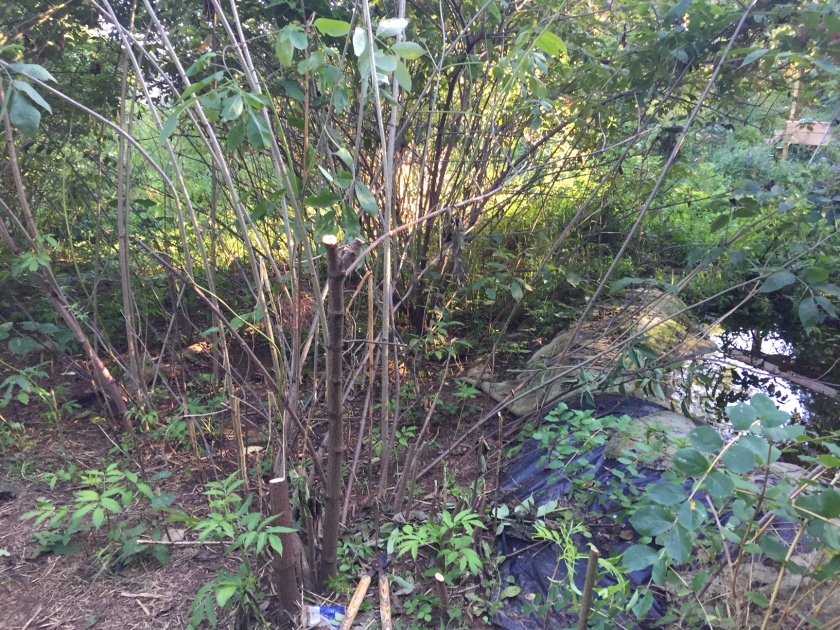
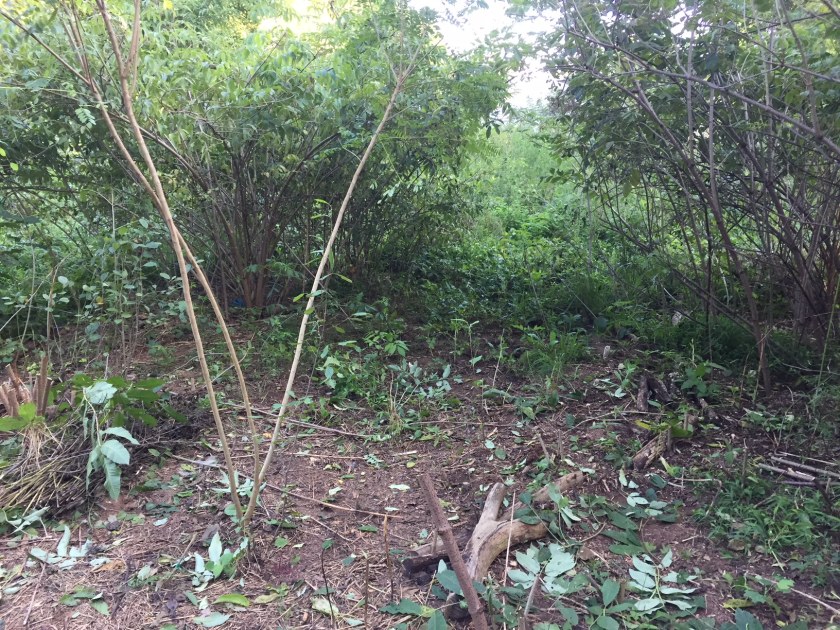
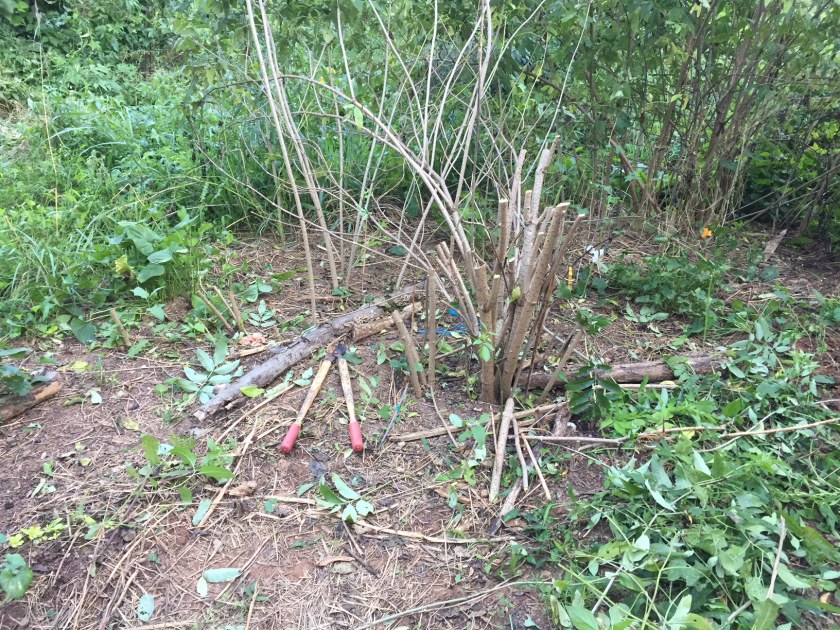
Once the shrubs have been sufficiently topped, they must be dug up and transplanted to a more amenable situation.
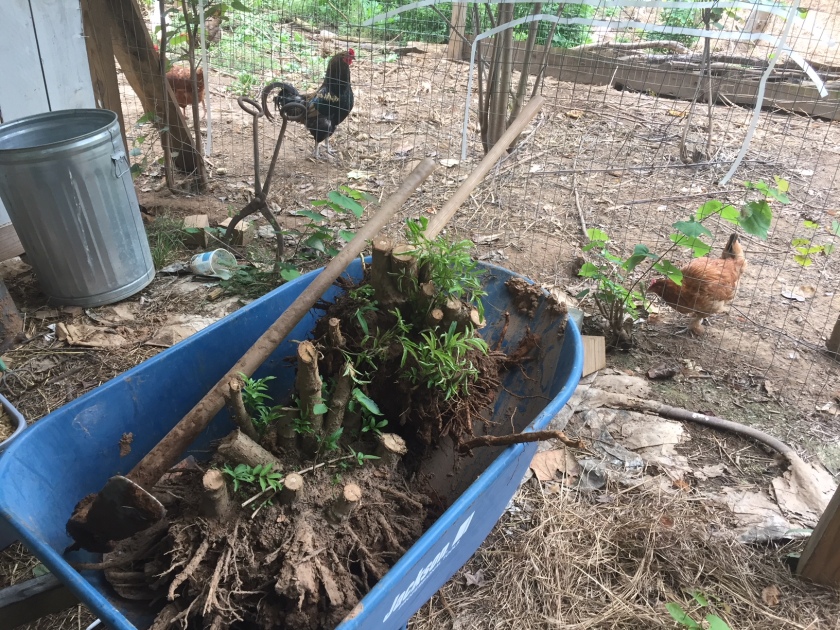
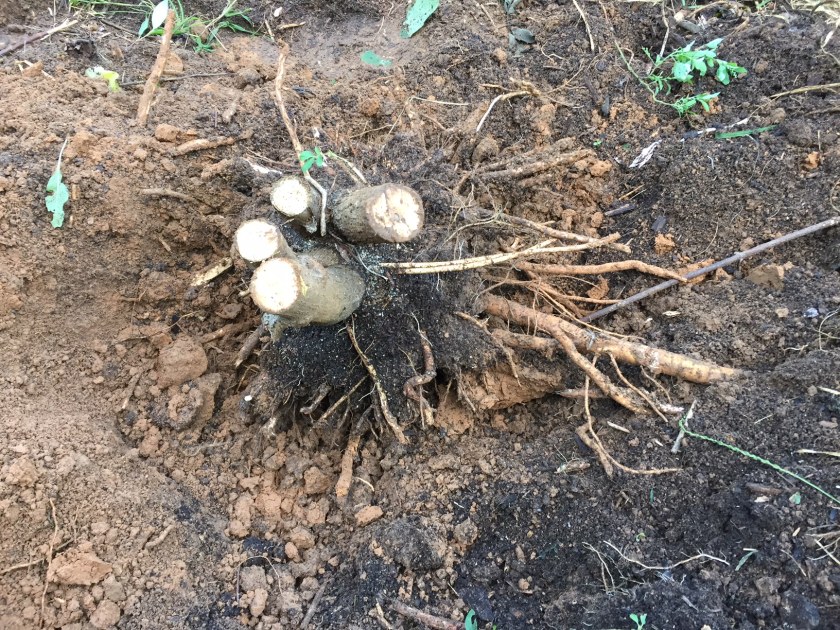
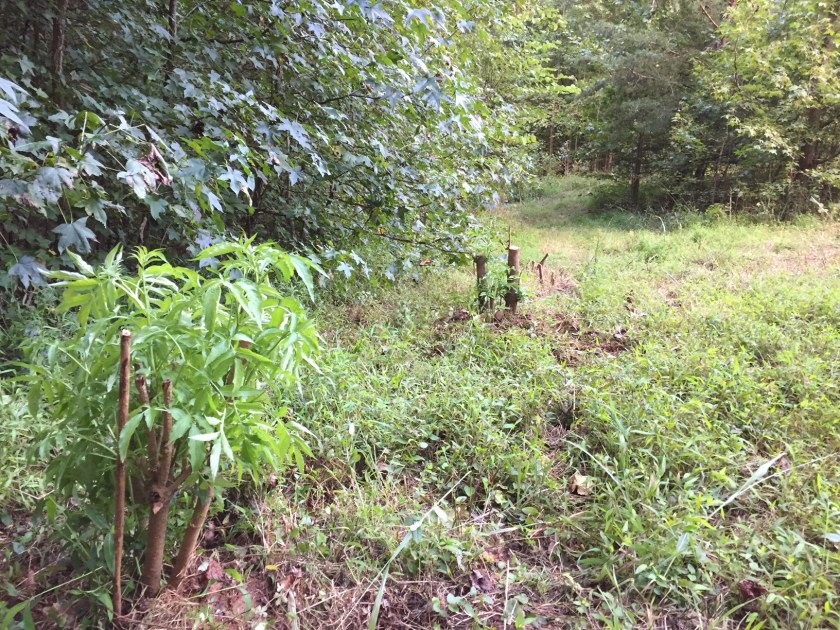
This was the second time we’ve experimented with a traditional three sisters companion plant garden. It was more substantial (60′ x 100′) than the first, and suffered less predation from deer and raccoons and skunks. Its productivity has kept me fed up to the present and beyond. The varieties planted: Ohio blue clarage dent corn, Seminole pumpkin, and Cherokee cornfield pole snap bean. I didn’t realize the blue clarage corn was blue and white instead of pure blue. I may switch to a bluer version, but I was highly impressed with the productivity of this variety.
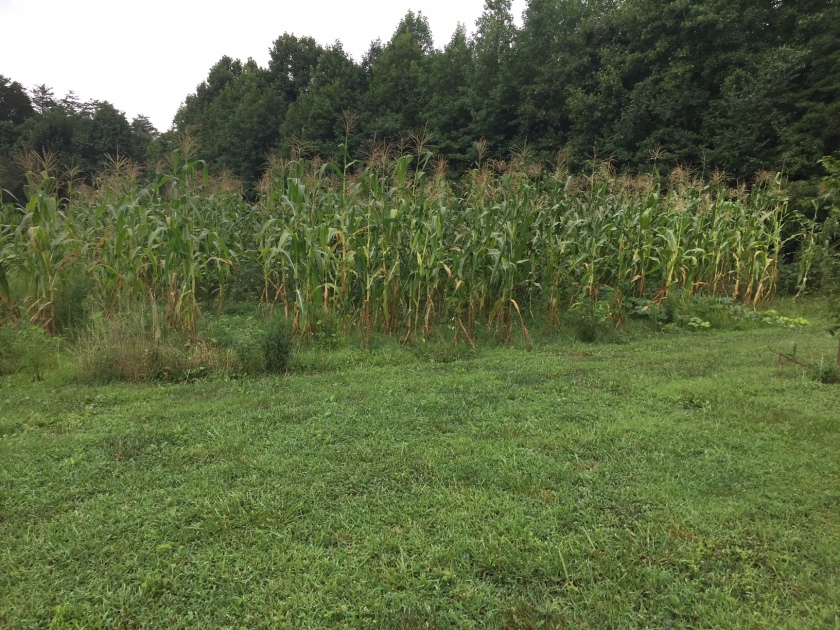

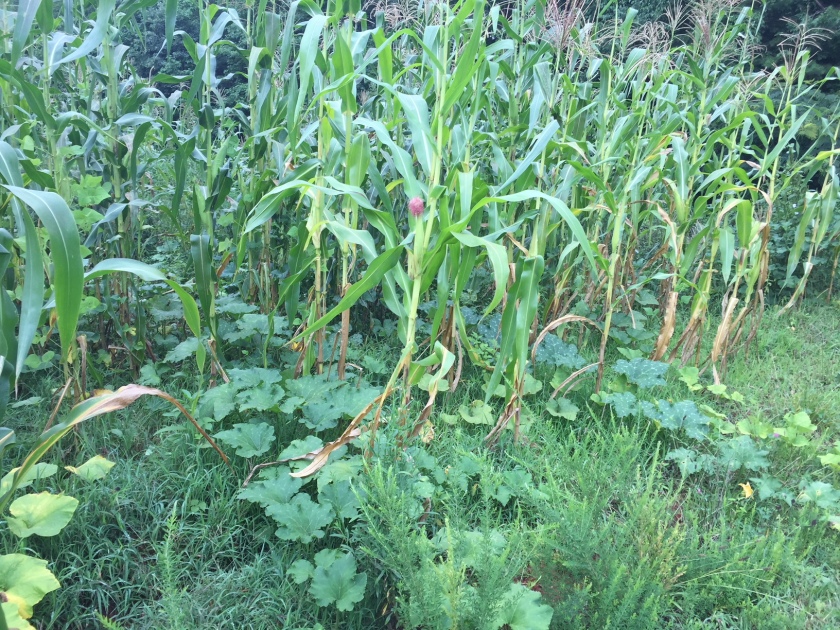
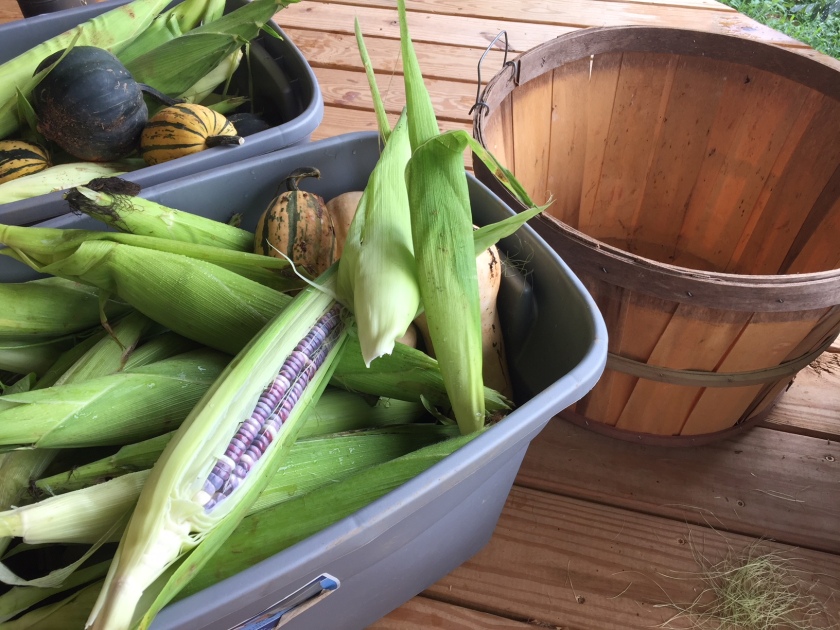
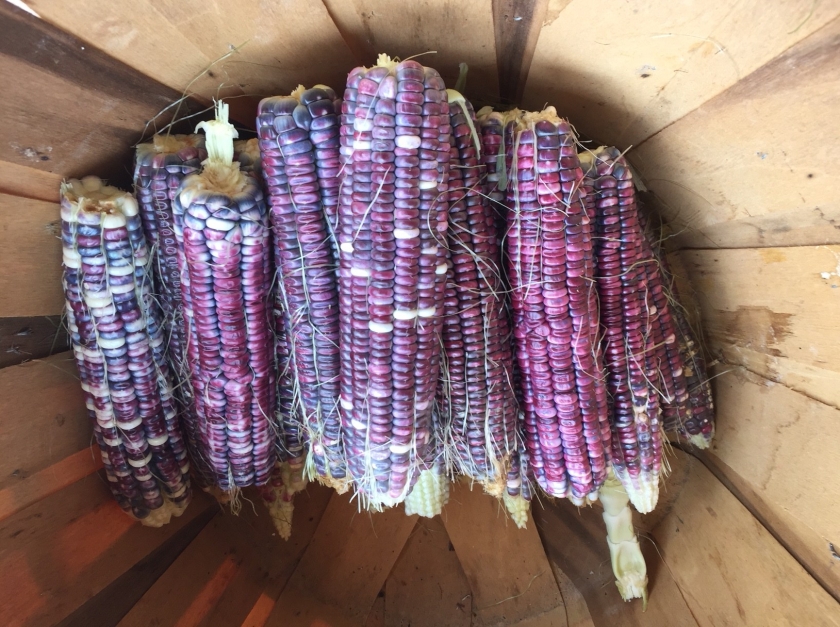

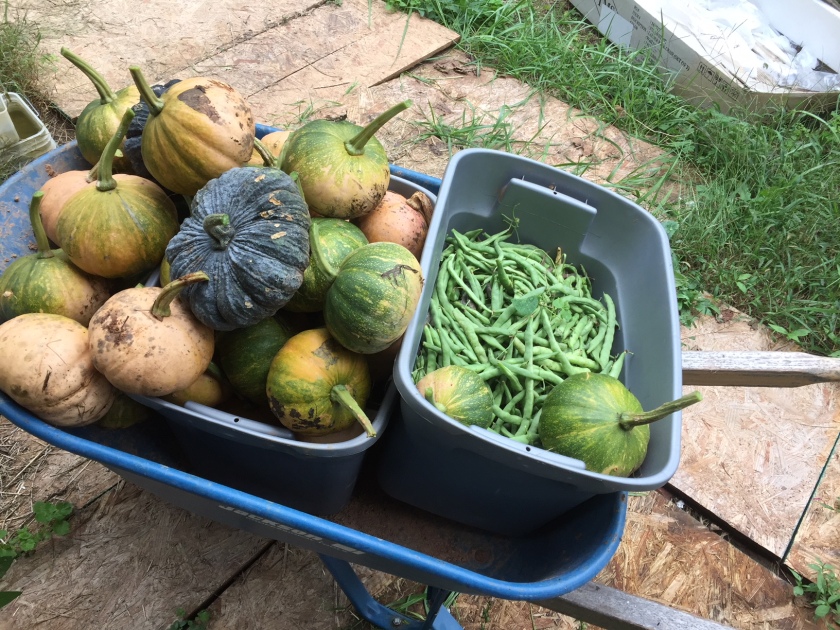
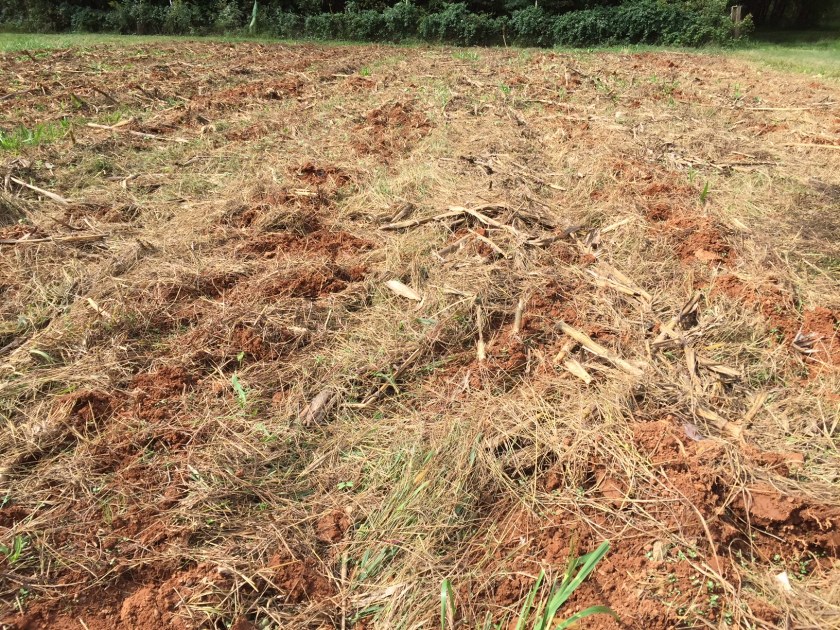
The passion flower quickly turned the garden into a steamy tropical jungle. The leaves, when tender, and the flowers can be tinctured and can have medicinal properties.
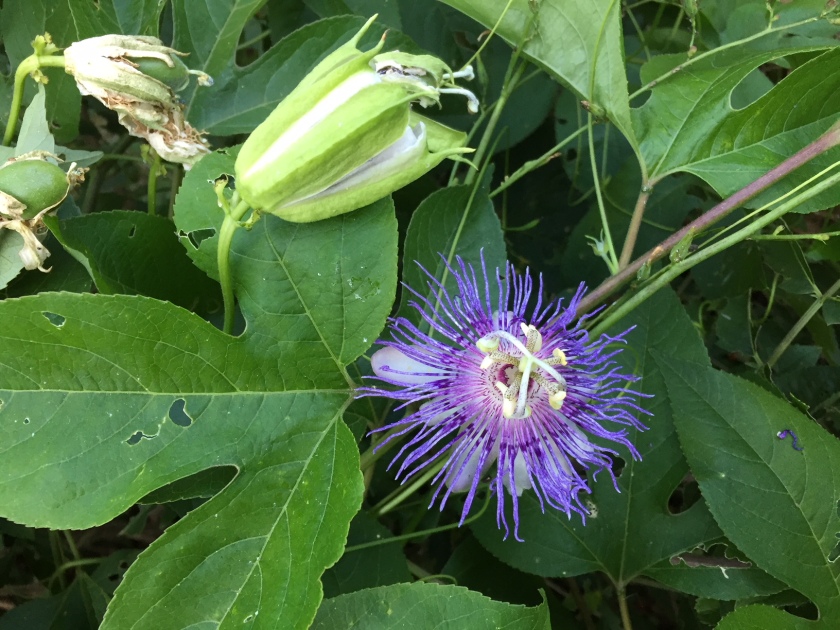
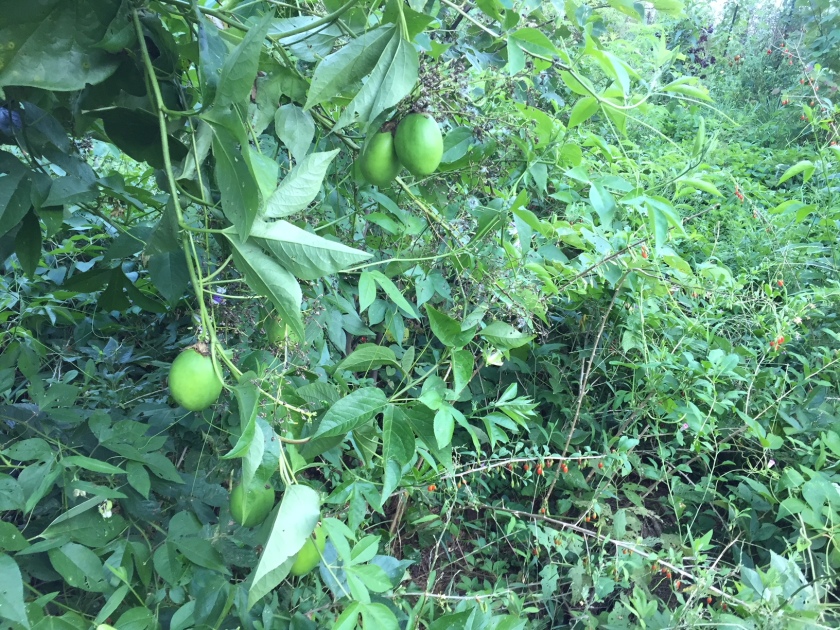
As fall advanced and the nights became chillier, the leaves lost their youthful blush but remained vigorous and productive. Below – the first and third photos show indigo bush (Amorpha fruticosa) being overtaken by the vine. The middle photo is the sturdier redbud (Cercis canadensis), nonetheless appearing a bit smothered.
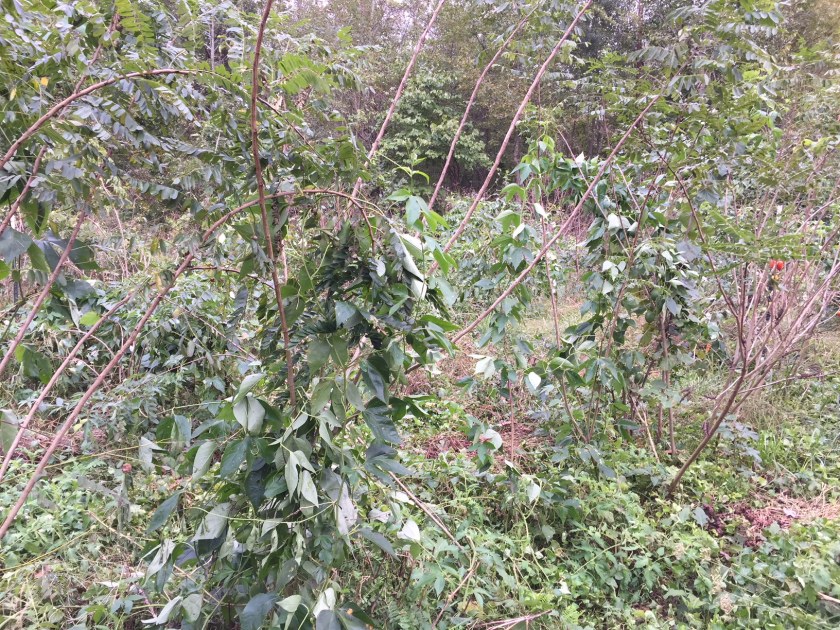
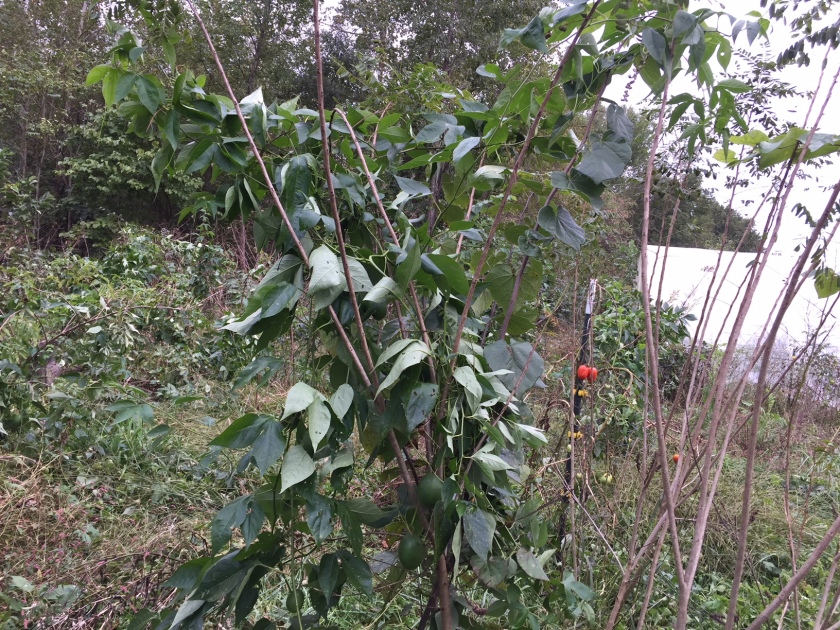

The vines were still surviving by late October. I finally pulled them all and fed them to the chickens in November.
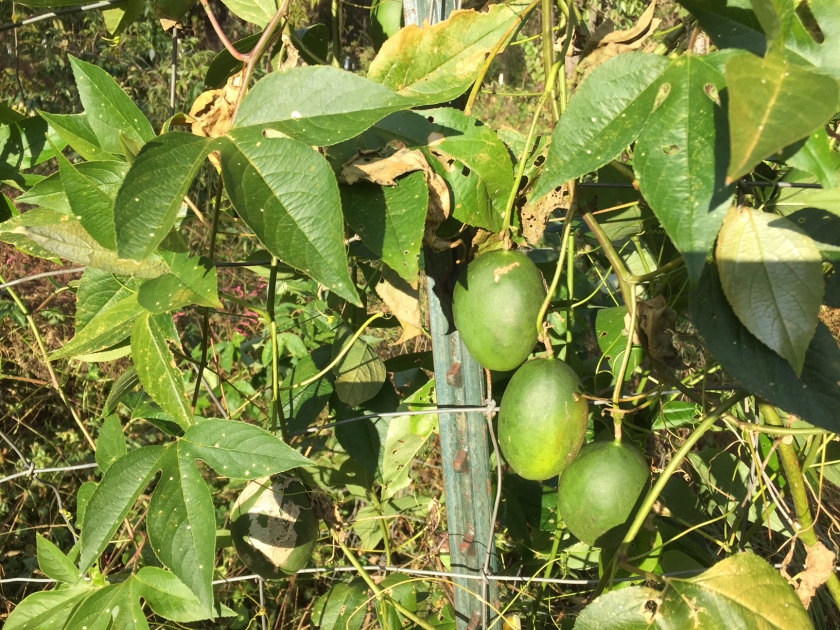

As in summer of 2017, this was a good year for gojis. I’ve noticed that the plants can be trained into a hedge. They spread by roots just below the surface – baby plants seem to emerge a few feet from the mother plant. The plants had red berries until the December snow.
These fresh berries do not have the same taste as the ones at the store (not as sweet). I air dried them to extend their useful life, and they had a drier (as opposed to chewy, raisin-like) texture. I’ll need to do research and/or continue experimenting next year.
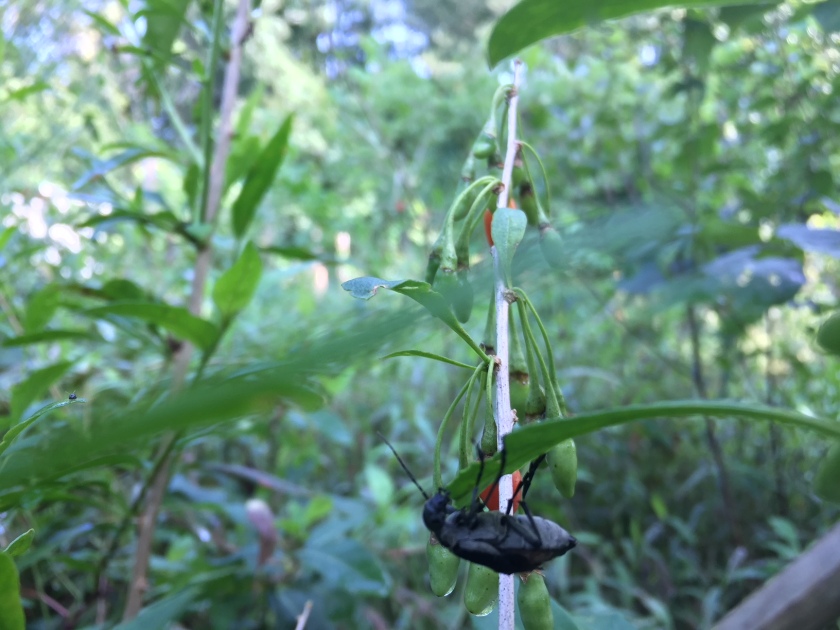

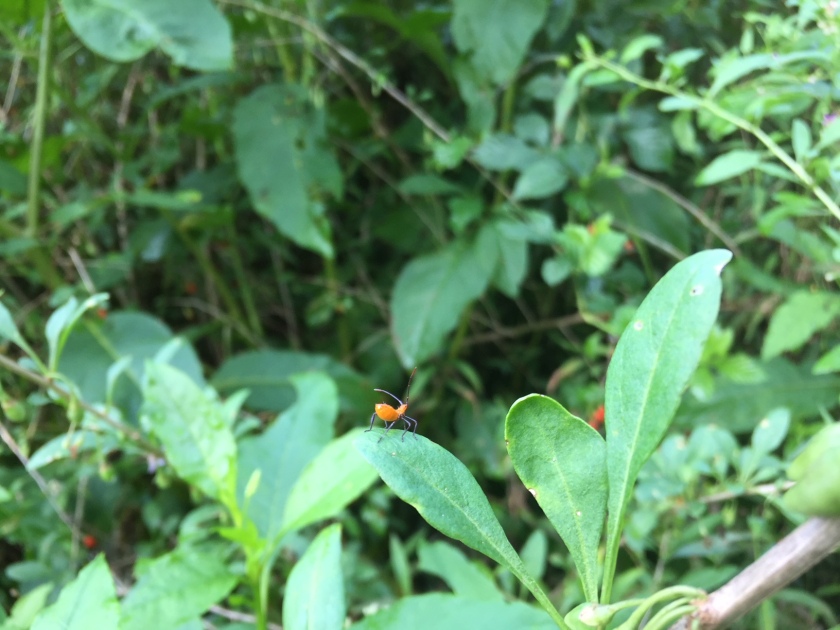

My brother was given this as a tiny sapling a couple of years ago by someone on his delivery route. I believe it was referred to as a Japanese magnolia, but I can’t be sure I recall precisely.
It is now about 5 feet tall, and lives by the frog pond.
Jack the yard rooster (Gallus gallus domesticus) and his successor who remains without name.
Jack, formerly the alpha, lost his eye in a fight with the black rooster, and so was demoted to beta male, and banished to the garden. Once, he got in a physical confrontation with the now-dominant black rooster, but, with only one eye and no longer at the peak of fitness, he literally ran away screaming like a scared child. It was humorous and bitter-sweet.
Now, all confrontations (rare as they may be) occur with a fence in between.
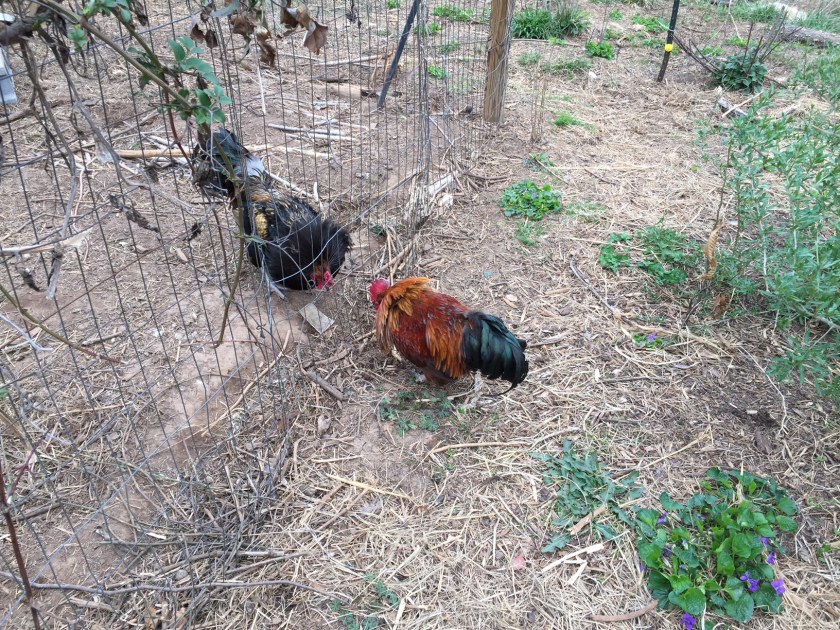



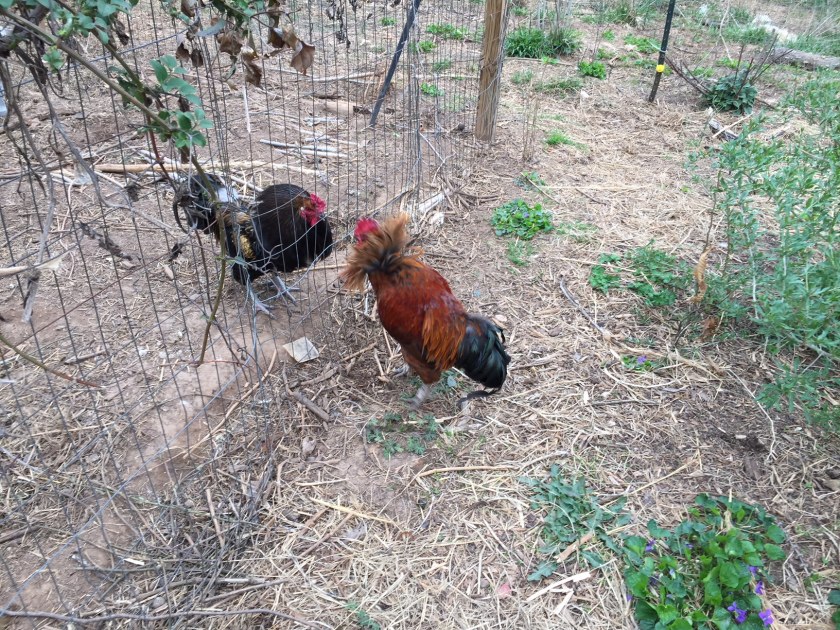
Last night, I was invited to speak about our farm at one of the local Garden Clubs. In the South, a Garden Club is a proper noun. And, while they engage in service and support various causes, it is infrequent that they actually get their hands dirty in the art and science of gardening.
So, it was a breath of fresh air to have an audience that was so receptive to what I had to show and say.
While they took care of club business and socialized, they shared with me a piece of vanilla raspberry cake with a thick fondant and a cup of coffee, on matching china with a mauve border. I was afraid I would drop the coffee cup and it would shatter into a thousand pieces.
Then I presented.
After an update on the garden, I launched into my own PSA (public service announcement).
Perhaps you’ve heard of what the New York Times describes as an “insect armageddon.” This may seem like sensationalism, but hear me out. An entomological society in Germany has found that local populations of flying insects have declined by some 75% in the past three decades. Given that North America is more similar than not to German in terms of industrialization and resource use, it would seem that we have probably experienced similar declines. This can be anecdotally corroborated by observations that we make after hours of driving on the highways – these days, it seems there are hardly any bugs plastered on the windshields anymore. And I do seem to remember, as a kid in the backseat of the station wagon, seeing numerous bugs splattering wherever we went, as well as an insect-ridden front grill.
I wanted to come prepared when talking to this group of ladies, so I did a little more digging in the cyber ether, and found that, a couple of years ago, Yale University supported a study showing similar worldwide declines in the Lepidoptera order (butterflies and moths), and even sharper losses in other invertebrates. Crucially, the author makes a link between this somewhat abstract interpretation, and some concrete warnings that we’ve been hearing about for at least a decade or more – the falling populations of honeybees and monarch butterflies.
Fellow blogger, the entomologist Simon Leather, wrote an excellent post about all this when it was breaking news.
Back to the Garden Club – I let them know, in no uncertain terms, that I was not there to say “shame on us all,” just simply to bring this compelling trend to their attention, and to describe what I was doing to mitigate it. I concluded by showing them my work with native legumes (if you’ve gotten this far in this post, you are probably aware of my ongoing fascination with native legumes), and how these legumes support native insects and other fauna.
The meeting ended well. They were grateful, I was grateful, the meeting was adjourned, and we all departed, going our separate ways to our homes and families.
What is to become of the insects?
This will be my first attempt at commentary. I hope folks will bear with me as I express my developing perspective.
First, some observations of interest: a mostly clear night, the waning moon brilliant above (we will not see another full moon until January 1); the third night I’ve heard the honking of Canadian geese above as I gathered eggs in the darkness. Only these beautiful creatures can sound forlorn and yet joyous at the same time.
Now, on to the topic at hand…
From time to time, I talk about life in rural NC, not being defensive by any measure, but also being honest and forthright.
This is going to be one of those posts.
I was recently struck by an article: “How Dollar General Became Rural America’s Store of Choice (WSJ)” This hit close to home – in a very literal sense. There is a Dollar General on the way to the community college where I work, and right across the street from it, a Family Dollar.
The article notes that Dollar General targets the “lower-end market,” for instance, by marking items in 5-cent increments (easier to add for tight budgets). The household income of targeted shoppers is on the lower end of $40,000¹. The article also notes that the stores sell no fresh meat or produce, and that, by selling snacks and sundries in smaller, more economical packages, they appeal to thrifty shoppers more than Wal-Mart.
Having grown up in a cash-strapped household, I understand the need to pinch pennies. But, there are deeper issues here.
Whenever I pass these sentinels of American thrift, I feel that I’m driving through a food desert².
The smaller package-size is also notable. I have a suspicion, ostensibly confirmed elsewhere, that a cheaper price tag does not make it more economical for the unit price. And it’s hard to comparison shop due to the different sizes when compared to grocery stores.
The proliferation of dollar stores may be a symptom of a larger economic malaise that is besetting rural America. It may also provide rural residents with vital affordable resources that they would otherwise have to drive significant distances to obtain.
My take-away is, as with most aspects of 21st-century living (or is it just being human), one of ambivalence. I feel bad shopping at chains. I feel bad buying imported plastic things. I feel bad not supporting a more local economy. I feel bad spending money period. I also feel fortunate to have access to these products. And to be in a position to purchase them as I need them.
In the end, I know that I can count on Dollar General. However, the supermarkets are preferable because they have celery and whole-milk plain yogurt. The ultimate would be to grow my own celery (I’ve tried) and making my own yogurt (one day?).
What do you think? Do you have a dollar store anecdote to share? Has this path already been trod upon by too many feet? (Any comments, questions, or complaints about my diction and writing style will be warmly received as well)
¹Median household income of our county: $38,000 ($8,000) below state average. Portion of persons living in poverty: 18% (three points above state average).
²According to the U.S. Department of Agriculture, the definition of a food desert is “both a low-income community with limited food access and a rural area 10 miles from the nearest supermarket;” while the area being described is about 10 miles from a supermarket, most people have gardens.